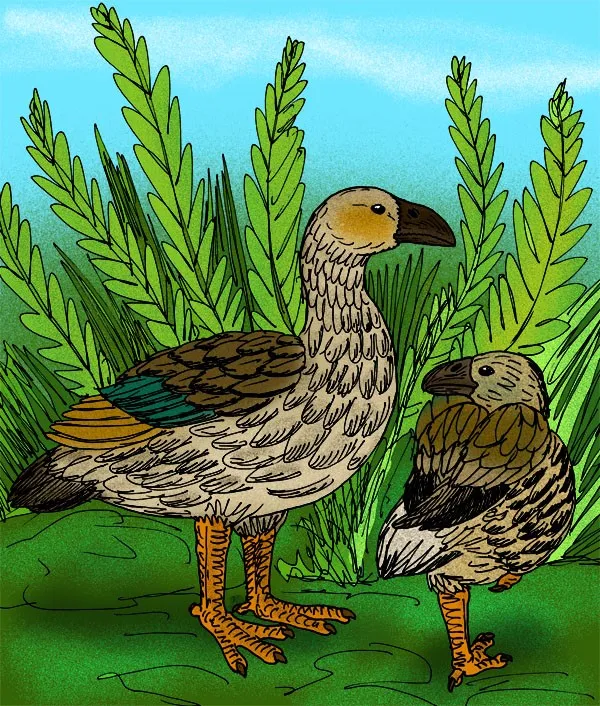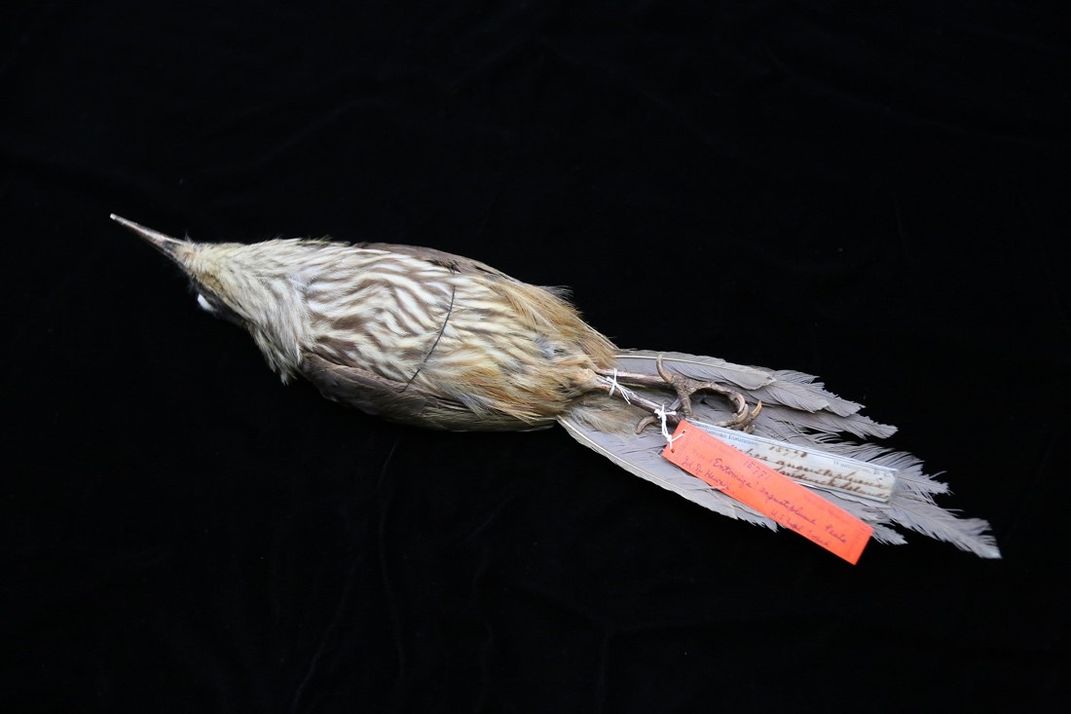NATIONAL MUSEUM OF NATURAL HISTORY
Meet One of the Curators Behind the Smithsonian’s 640,000 Birds
Dr. Helen James’ work on avian extinction helps scientists understand how bird species today respond to threats like human encroachment and environmental change.
/https://tf-cmsv2-smithsonianmag-media.s3.amazonaws.com/blogging/featured/A_person_holds_and_looks_at_a_taxidermied_bird..jpg)
There are over 10,000 species of birds in the world, making up a hefty portion of the world’s total vertebrate biodiversity. Scientists who study this feathery group of animals know that by learning more about birds’ evolution and DNA, our understanding of Earth’s countless species will soar to new heights.
This National Bird Day, we spoke to Dr. Helen James, Curator of Birds at the Smithsonian’s National Museum of Natural History, to learn why ornithologists’ interest in avian biodiversity is sky-high. James uses both the museum’s vertebrate zoology and paleobiology collections to research historic patterns of bird resiliency. Her work on avian extinction is helping scientists understand how bird species today are responding to threats like human encroachment and environmental change.
You work in the museum’s vertebrate zoology department, but you also frequently use the paleobiology collection for your research. Why is it important to you to examine both modern specimens and fossils?
I study very recent bird extinctions, especially in island habitats. Because islands tended to be uninhabited by humans for longer than the continents were, their fossils can give us a clear example of how the ongoing biodiversity crisis caused by humans might have started.
For instance, there were many fascinating types of birds that lived only on the Hawaiian Islands. But these birds went extinct after humans arrived. We had to search the islands for years to find traces of them. By studying these species’ bones, we can learn more about what types of vertebrates lived in Hawaii and why they became extinct.
What types of birds used to inhabit Hawaii?
One big group of birds that was vulnerable to extinction was ground-dwelling birds. In the Hawaiian Islands — and many other islands — there are quite a few bird species that have lost the ability to fly. These birds once were great flyers, because they crossed the ocean to Hawaii.
But in the absence of predators, their wings dwindled, because they didn’t need the ability to fly. One group of ducks evolved into these heavy-bodied, ponderous, ground-walking birds — called the moa-nalo — that would feed on mostly leafy vegetation. In essence, they were occupying the mammalian niche of herbivores.

What can the massive bird extinctions in the Hawaiian Islands tell you about past and present avian biodiversity?
The islands provide a very rich way of understanding the ecological history behind a massive extinction. We're developing an older fossil record on the islands that shows there was actually very little extinction leading up to this catastrophic time after humans arrived.
The number of extinct bird species we’ve uncovered is about equivalent to the number of mammals that went extinct at the end of the Pleistocene (roughly 12 thousand years ago) in North America — over 60 species. So, we can use this to learn about what in the human era specifically led to a much higher extinction rate and what types of birds are generally more vulnerable to extinction.
The other important thing is it’s not just extinct species that we find and study. There are species still living in the islands whose ancient bones are also being collected. By finding this fossil record of living species —many of which are now really endangered — we can discover where they lived and what habitats they used back when they were doing well. This information has been used to help habitat restoration projects and reintroduction of species successfully. That’s the uplifting part — where you can do something to help modern species.
What role does morphology — or the study of species’ characteristics and appearances — play in examining fossils?
In my work, I have to know the morphology of present species so that I can identify extinct bird species. I need a very good comparative skeleton collection that tells me about the osteology of bird species that are still alive.
That's the value of the vertebrate zoology collection that we have at the Smithsonian. The curators, including myself and others, have long emphasized developing the museum’s comparative skeleton collection. It's a magnet for paleontologists, archaeologists, anatomists and anyone who wants to study the function of birds. We have this tremendous resource that improves the quality of everyone’s research because it lets us compare the bones that we dig up with previously identified skeletons.
What are some of your favorite specimens in the collections and why?
I always have trouble deciding my favorites! In the modern vertebrate zoological collection, the comparative skeleton collection is just essential for my research and the research of so many other people.
In that collection, there is a specimen that was brought back by one of the first major exploring expeditions sent out by our country. The expedition went to the Hawaiian Islands and brought back several bird specimens. There's one that’s beautifully prepared. But only four specimens of this bird were collected and then it was never seen again. The name of the species is Chaetoptila angustipluma, or the kioea.

During my research in Hawaii, we began to find this bird as a fossil. I found some very nice skeletons, so we learned where it had lived and what kind of habitat it probably lived in. It let us create a picture of this very mysterious, but beautiful bird.
One of my favorite other things about the Smithsonian is the fact that the bulk of my collections from the Hawaiian Islands are a part of the national paleobiology collection and will be cared for long after I’m gone. The fact that I’ve been able to fill up one particular storage case with specimens of species that I’ve described is extremely important to me. So, that case of fossils that I’ve described is a real favorite of mine as well.
Meet a SI-entist: The Smithsonian is so much more than its world-renowned exhibits and artifacts. It is a hub of scientific exploration for hundreds of researchers from around the world. Once a month, we’ll introduce you to a Smithsonian Institution scientist (or SI-entist) and the fascinating work they do behind the scenes at the National Museum of Natural History.
Related Stories:
Meet the Scientist Using Fossils to Predict Future Extinctions
Landmark Study Shares Smithsonian Bird DNA Collected Over Three Decades
Meet the Scientist Studying Vulture Guts for Clues to Disease Immunity
How Scientists Still Use the Smithsonian’s First Collections, 170 Years Later
Scientists Describe New Bird Species 10 Years After First Reported Sighting

